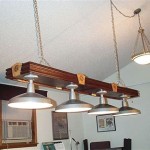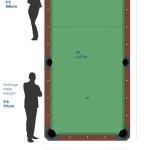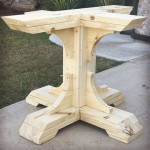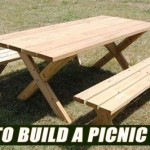Eat Bulaga: A Coffee Table Book Celebrating a Cultural Phenomenon
Eat Bulaga, the Philippines' longest-running noontime variety show, has become an indelible part of the nation's cultural landscape. Its enduring popularity, spanning decades, has cemented its position as a source of entertainment, laughter, and even social commentary for millions of Filipinos, both at home and abroad. A coffee table book dedicated to Eat Bulaga serves as a visual and textual chronicle of this remarkable journey, offering a comprehensive look at the show's history, evolution, impact, and the personalities that have shaped its success. The book aims to provide a tangible piece of television history for fans, academics, and anyone interested in understanding the dynamics of Philippine popular culture.
The creation of an Eat Bulaga coffee table book is a significant undertaking, requiring meticulous research, curation of visuals, and a compelling narrative structure. It's more than just a collection of photographs; it's a carefully constructed journey through the show's various eras, showcasing its most memorable moments, iconic segments, and the evolution of its comedic style. The book's value lies in its ability to capture the essence of Eat Bulaga, translating its decades-long run into a visually stunning and informative resource.
Documenting Eat Bulaga's Rich History
One of the key purposes of an Eat Bulaga coffee table book is to meticulously document the show's rich and complex history. This includes tracing its origins back to 1979 when it first aired on RPN 9, then known as Radio Philippines Network. The book would detail the initial format, which differed significantly from the show's current iteration. Early episodes were characterized by a simpler, more straightforward approach, focusing on games, contests, and lighthearted entertainment. The historical section would highlight the show's early struggles and the challenges it faced in establishing itself in a competitive media landscape.
The historical narrative would also encompass the show's transition from RPN 9 to ABS-CBN in 1989, and then to GMA Network in 1995, where it has remained ever since. Each of these network shifts represents a significant chapter in Eat Bulaga's history, influencing its format, audience reach, and overall production quality. The book would explore the reasons behind these moves, examining the strategic decisions made by the show's producers and the impact on the show's longevity.
Furthermore, the historical section would delve into the evolution of the show's segments, highlighting the changing trends in Philippine popular culture and how Eat Bulaga adapted to these shifts. From early game shows to the introduction of more elaborate and socially relevant segments, the book would illustrate the show's ability to reinvent itself while maintaining its core identity. Key figures who played a role in the show's development, both on and off screen, would be profiled, acknowledging their contributions to Eat Bulaga's enduring legacy.
The historical account wouldn't shy away from addressing controversies or challenges the show has faced throughout its run. This could include discussions of competition from rival noontime programs, changes in leadership, or periods of declining ratings. By providing a balanced and comprehensive historical perspective, the coffee table book aims to offer a complete understanding of Eat Bulaga's evolution and its resilience in the face of adversity.
Celebrating Iconic Segments and Personalities
A significant portion of the Eat Bulaga coffee table book would be dedicated to celebrating the show's iconic segments and the personalities that have brought them to life. These segments have become deeply ingrained in the collective consciousness of Filipinos, generating catchphrases, memes, and countless imitations. The book would showcase these segments with stunning visuals, behind-the-scenes details, and anecdotes from the hosts and contestants involved.
Segments like "Pinoy Henyo," a mind-reading game that has become a national obsession, would receive prominent coverage. The book would explore the origins of the game, its simple yet engaging mechanics, and the memorable moments that have defined its popularity. Similarly, segments like "Little Miss Philippines" would be examined, highlighting its role in discovering young talents and its impact on children's entertainment in the Philippines. The book would delve into the stories of past winners and contestants, tracing their paths and showcasing their achievements.
The coffee table book would also pay tribute to the show's hosts, both past and present. Tito, Vic, and Joey, the iconic trio who have been the heart and soul of Eat Bulaga for decades, would be prominently featured. The book would explore their individual backgrounds, their comedic chemistry, and their enduring appeal to audiences of all ages. Other notable hosts, such as Allan K., Pauleen Luna-Sotto, Ryan Agoncillo, and Jose Manalo, Wally Bayola, and Paolo Ballesteros (JoWaPao), would also be recognized for their contributions to the show's success. The book would include exclusive interviews, personal anecdotes, and behind-the-scenes glimpses into their lives.
Furthermore, the book would celebrate the ordinary Filipinos who have become stars through Eat Bulaga. The show's commitment to showcasing the talents and stories of ordinary people has been a key factor in its popularity. The book would feature profiles of memorable contestants, winners of various contests, and individuals whose lives have been positively impacted by the show. This emphasis on human interest stories would underscore Eat Bulaga's role in connecting with its audience on a personal and emotional level.
Examining Eat Bulaga's Cultural and Societal Impact
Beyond its entertainment value, Eat Bulaga has had a significant cultural and societal impact on the Philippines. A coffee table book dedicated to the show would be incomplete without a thorough examination of this influence. This includes exploring the show's role in shaping popular culture, promoting Filipino values, and providing a platform for social commentary. The book would analyze how Eat Bulaga has reflected and influenced the evolving tastes and preferences of its audience.
One important aspect to consider is the show's contribution to the Filipino language. Eat Bulaga has popularized numerous catchphrases, idioms, and slang terms that have become integrated into everyday conversation. The book would examine the origins and meanings of these terms, tracing their evolution and impact on the Filipino vernacular. This linguistic analysis would highlight the show's role in shaping and enriching the language used by its audience.
The book would also explore Eat Bulaga's involvement in charitable activities and social awareness campaigns. The show has consistently used its platform to raise funds for various causes, provide assistance to underprivileged communities, and promote important social messages. These initiatives demonstrate Eat Bulaga's commitment to giving back to the community and using its influence for positive change. The book would document these efforts, highlighting the impact they have had on the lives of Filipinos in need.
Furthermore, the coffee table book would analyze Eat Bulaga's role in representing Filipino culture to a global audience. Through its international editions and its online presence, the show has reached viewers around the world, showcasing Filipino talent, traditions, and values. The book would explore the challenges and successes of these international ventures, highlighting the show's efforts to promote Filipino culture on a global scale. This analysis would underscore Eat Bulaga's significance as a cultural ambassador for the Philippines.
The coffee table book can also explore how Eat Bulaga has used humor to address social issues. By incorporating satirical elements and comedic sketches, the show has often tackled sensitive topics in a lighthearted and accessible manner. This approach allows Eat Bulaga to engage with its audience on important issues without being preachy or didactic. The book would analyze specific examples of how the show has used humor to promote social awareness and encourage positive change.
Finally, the book would consider the criticisms and controversies that Eat Bulaga has faced over the years. It is important to acknowledge that the show has not been without its detractors and that it has faced criticism for certain aspects of its content or its practices. The book would provide a balanced perspective on these criticisms, allowing readers to form their own informed opinions. By addressing both the positive and negative aspects of Eat Bulaga's legacy, the coffee table book aims to offer a comprehensive and nuanced portrayal of this iconic show.

Eat Bulaga Ang Unang Tatlong Dekada Coffee Table Book Hobbies Toys Books S Children On Carou

Eat Bulaga Coffee Table Book Hobbies Toys Books S Assessment On Carou
Eat Bulaga Ang Unangtatlong Dekada Ee Es

Eat Bulaga Coffee Table Book Hobbies Toys Books S Assessment On Carou

Eat Bulaga Coffee Table Book Hobbies Toys Books S Assessment On Carou

Eat Bulaga Coffee Table Book Hobbies Toys Books S Assessment On Carou

Bulaga Memories Inquirer Entertainment

Eat Bulaga Coffee Table Book Hobbies Toys Books S Assessment On Carou

Pin On Entertainment

Gold Equals Money Blog Eat Bulaga Coffee Table Book Ang Unang Tatlong Dekada








